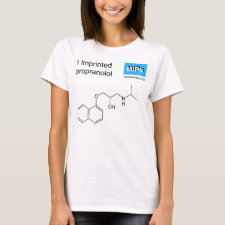
Authors: Li QJ, Ling BP, Jiang LD, Ye L
Article Title: A paradigm shift design of functional monomers for developing molecularly imprinted polymers.
Publication date: 2018
Journal: Chemical Engineering Journal
Volume: 350
Page numbers: 217-224.
DOI: 10.1016/j.cej.2018.05.187
Alternative URL: https://www.sciencedirect.com/science/article/pii/S138589471831012X
Abstract: Functional monomers play a key role in preparing molecularly imprinted polymers (MIPs) by forming complex with templates to create recognition sites in the polymers. In this paper, a new strategy was proposed to design functional monomers for efficient MIPs synthesis. This strategy dated from the investigations on previously developed MIPs. In propranolol imprinting process, methacrylic acid has always been used as a functional monomer, due to the efficient hydrogen bonding interactions between the carboxyl group in methacrylic acid and the 2-hydroxylethylamine group in propranolol. Given this, we assumed that a functional monomer having a 2-hydroxylethylamine moiety may be used to imprint carboxylic acid molecules e.g. naproxen. To demonstrate this idea, a new monomer 2-hydroxy-3-(isopropylamino)propyl methacrylate (HIMA) was designed. Computation results, by means of density functional theory method, revealed that HIMA could form a stable complex with naproxen through hydrogen bonding interactions with the carboxylic acid group. HIMA was then used to synthesize naproxen-imprinted polymers via precipitation polymerization. Binding experiments showed that all the MIPs could selectively recognize naproxen, confirming the feasibility of our paradigm shift in functional monomer design. The new functional monomer HIMA is a promising ligand that may be used to imprint other molecules having carboxylic acid or phosphoric acid groups. The paradigm shift in this study thereby opens a new avenue to design functional monomers for developing MIPs
Template and target information: naproxen, (S)-(+)-naproxen
Author keywords: functional monomer, molecularly imprinted polymer, propranolol, naproxen, Carboxylic acid



Join the Society for Molecular Imprinting

New items RSS feed
Sign-up for e-mail updates:
Choose between receiving an occasional newsletter or more frequent e-mail alerts.
Click here to go to the sign-up page.
Is your name elemental or peptidic? Enter your name and find out by clicking either of the buttons below!
Other products you may like:
 MIPdatabase
MIPdatabase









